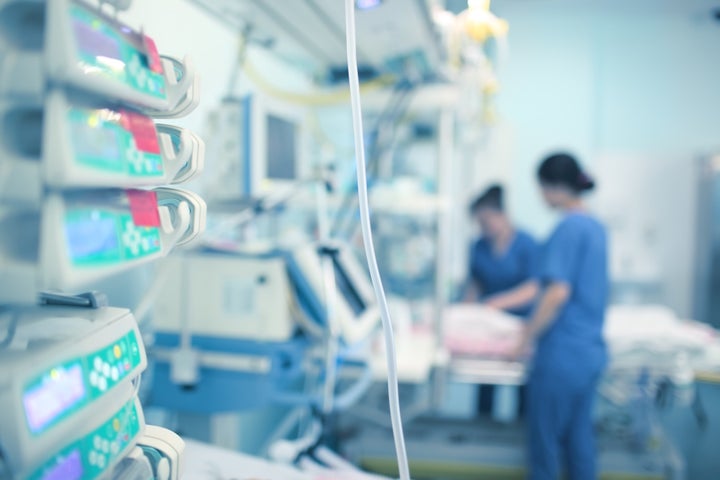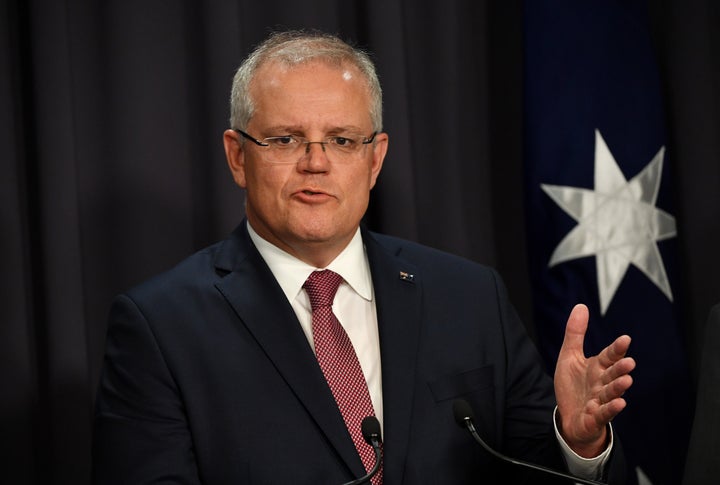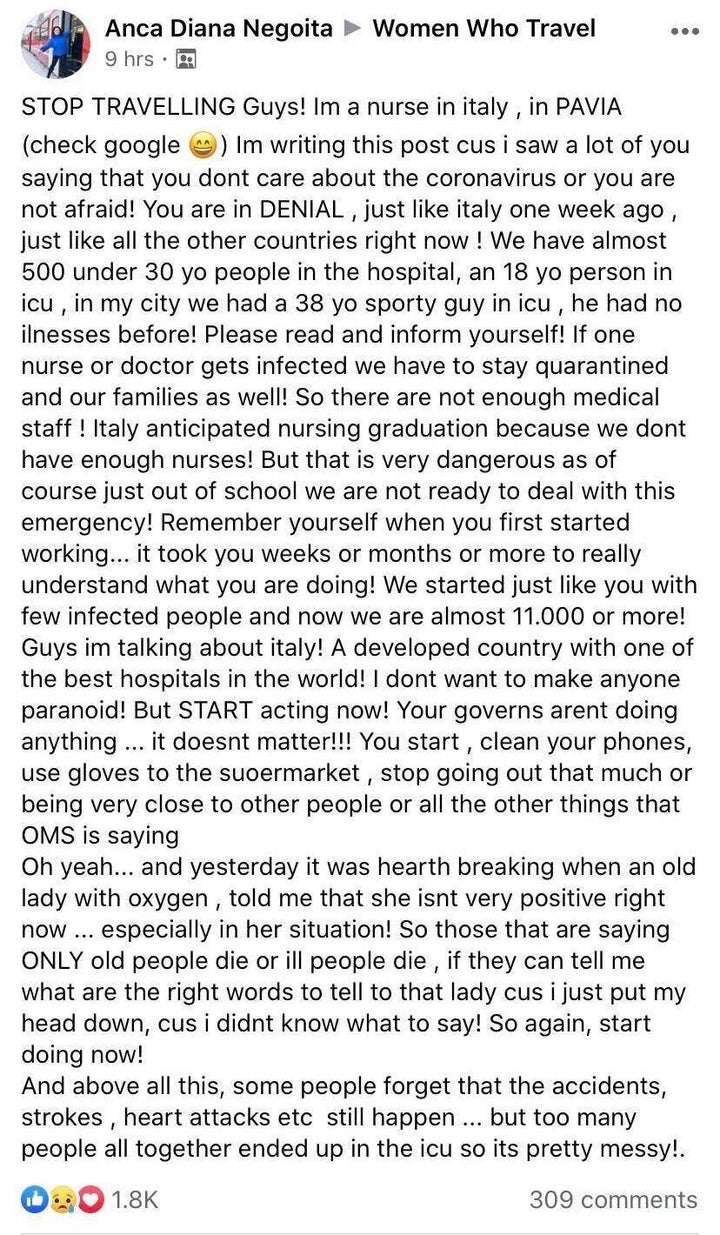Working in the intensive care unit at any hospital means exposure to various infections, but contraction of COVID-19 is not the biggest fear for one ICU nurse at Blacktown hospital.
The nurse, who wished to remain anonymous, has been working 12-hour shifts at the western Sydney hospital that has 16 intensive care unit beds, only four of which are suitable for isolating coronavirus patients.
She told HuffPost Australia it is disconcerting to see doctors disagreeing over patients’ testing needs, and she’s worried that NSW Health still has “no specific set testing plans.”
“I think there’s an element of stress to it just because we’re so confused in what we’re doing,” she said. “We work with a lot of infections, we get people presenting with tuberculosis, HIV and hepatitis. So I think dealing with the actual patient who could be infectious isn’t the scary part for us, because we obviously take the proper precaution and we deal with that.”

Over the past five weeks, patients who have travelled overseas or had flu-like symptoms have come to the hospital’s emergency department, and some have been transferred to ICU for COVID-19 testing. The nurse explained that depending on a patient’s condition, there can be up to three specialised medical teams treating the person. Given the rapid spread of the virus and “no real set” guidelines, doctors and nurses have been unclear about when to test for the virus. When each team’s head doctor has had a different opinion about testing, it’s been confusing and stressful for the nursing team.
“I think that’s where the stress lies in that, well this person could have it but people don’t want to test for it, or are we just over-testing unnecessarily, or are we exposing people to it and we don’t know?” she said.
“If one doctor says, ‘Yes, we’re going to test for coronavirus’, then in that sense we start doing all of our precautionary measures like wearing our protective gear and we put the patient in an isolation room.
“Whereas if a doctor says, ‘No, they don’t suit the requirement for testing’, then it’s business as usual. We don’t put them in an isolation room, and we technically don’t have to wear the mask and the goggles.”
Current Advice To Australian Health Professionals
Last week the Australian Medical Association (AMA) said guidelines were “confusing, frustrating and challenging” for doctors and nurses.
“In NSW it’s becoming increasingly challenging and frustrating to know what to do on the ground,” Dr Danielle McMullen, the NSW AMA vice president, told ABC.
“We’ve seen conflicting media reports over the past few days about who to test, when to test them, how to test them and where to test them.”
Australian doctors are being told that a patient requires coronavirus testing if they meet the ‘suspect case’ definition outlined in the CDNA (Communicable Diseases Network Australia) National Guidelines for Public Health Units.
To meet the criteria, the patient must have been overseas in the past 14 days before feeling symptoms or had close contact in the past two weeks with a confirmed case of COVID-19 and be showing symptoms such as shortness of breath, cough and sore throat, with or without fever. The same goes for health care workers who are showing symptoms and have been exposed to confirmed cases.
For ICU patients, doctors have been advised that “clinical judgement should be exercised considering the likelihood of COVID-19”. Patients who have required ICU care for community-acquired pneumonia, with or without recent international travel, meet the testing criteria. If a person hasn’t required ICU care but has respiratory or multiorgan failure, they too are eligible for testing.
Nurses ‘Copping Abuse’
Clear guidance or not, the Blacktown nurse said “the panic that surrounds me” also doesn’t help when doing her job.
“You’re getting a lot of family members and patients come in; they’re rightfully stressed because they haven’t seen something like this before. There’s this mass hype around it where people are spreading false information and then kind of translating into our job where people think they know better than what we’re doing,” she explained.
“That’s kind of where we’re probably copping a bit more abuse and attitude from people who think they know what’s happening more.”
Not Enough Hospital Beds
At Blacktown hospital, there are 16 ICU beds. However, not all can suit COVID-19 patients. “For there to be proper isolation, they have to be negative pressure rooms, and we only have four of them,” the nurse explained.
If the coronavirus outbreak “reaches a bigger scale” within the Blacktown district, she said, patients will most likely be transferred to western Sydney’s largest hospital in Westmead, where other COVID-19 patients have already been treated.
This week, the Australian and New Zealand Intensive Care Society (ANZICS) will ask Australia’s Chief Medical Officer Brendan Murphy to double the amount of ICU beds in Australia to 4000 to cope with the pending demand.
“If it was a truly catastrophic situation, we could potentially in Australia double the number of ICU beds for a period of time,” ANZICS’ president, Anthony Holley, told the Sun-Herald.
On Monday, Australian Prime Minister Scott Morrison said a newly formed National Cabinet would look into “changes to intensive care unit configurations and fever clinics,” but there’s been no promise to increase the amount of ICU beds.

Avoiding Italy’s Dire Situation
John Fraser, a pre-eminent specialist at the Prince Charles Hospital and director of ICU at St Andrews Hospital in Brisbane, said a lack of government action and a lag in the public changing their behaviour could lead to Australia facing a similar situation to Italy, where staff in ICUs have been advised to provide care to patients based on age limits, or “life-years” left based on pre-existing conditions.
“We will not cope,” he told ABC’s Australian Story. “Doctors may have to ration care based on age.
“We want less people to come to intensive care. That means stay at home if you can stay at home, avoid handshaking, no mass gatherings, even those under 500 people.”
Italy went into lockdown last week, with the country posting the highest daily increase in deaths of any country since the outbreak began. On Saturday, the number of positive cases rose to 24,747 from 21,157. There were 368 new deaths on Sunday, bringing the death toll to 1,809.
A nurse in Pavia, a city south of Milan, described her anguish and exhaustion from working around the clock in ICU while begging tourists to “stop travelling” and spreading the virus around Italy.
The woman, Anca Diana Negoita, said there were almost 500 people under age 30 in the hospital she works at, and there was one patient in ICU who was younger than 18. She said the system is so desperate for more staff that hospital management considered rushing nursing students through graduation in order to get them working in the wards faster.
“We had a 38-year-old sporty guy in ICU. He had no illness before,” she wrote in the Women Who Travel Facebook group, adding a grim warning that other countries could end up like Italy, with a surging death toll and nothing left to do but comfort patients as they await an uncertain future.
“I just put my head down,” she said while explaining the “heartbreaking” moment of trying to console an elderly patient who was close to giving up.
“Cus I didn’t know what to say.”

Coronavirus In Australia
At least 336 people in Australia have tested positive, and five people have died after contracting COVID-19.
The virus has infected nearly 170,000 people worldwide and killed over 6,600.